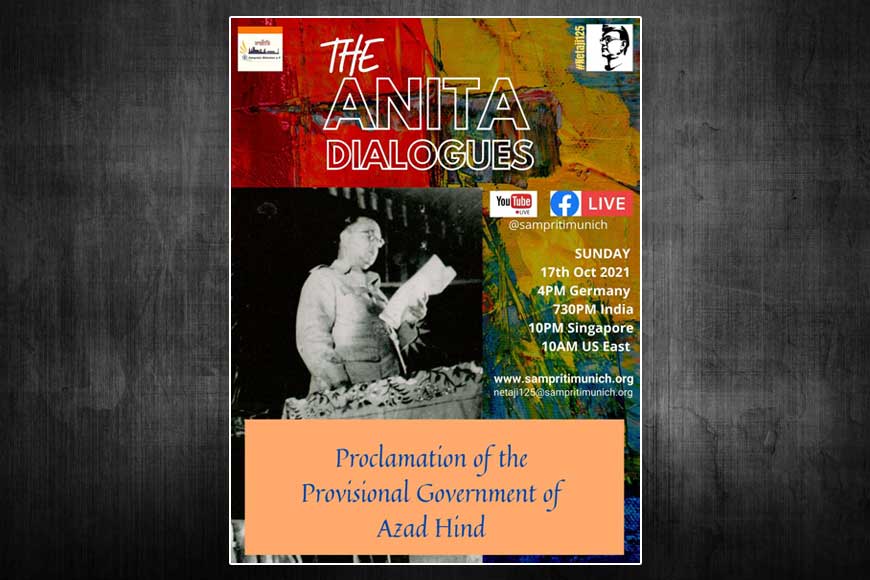Azad Hind, the government that saw the future

October will remain a special month in the history of India’s struggle for freedom. In 1943, it was in October that Netaji Subhas Chandra Bose established the Provisional Government of Free India (Arzī Hukumat-e-Azad Hind) or simply Azad Hind, a provisional Indian government, in Japanese-occupied Singapore.
It is the Azad Hind that forms the basis of the ninth edition of ‘The Anita Dialogues’ featuring guest panelists Sumeru Roy Chaudhury and Sanjay Choudhry, alongside Netaji’s daughter Dr Anita Bose Pfaff. The Anita Dialogues is a series of monthly conversations with Dr Bose Pfaff, aired on YouTube and conducted by Sampriti, an organisation of Bengalis in Germany, to mark the 125th year of Netaji’s birth. The conversations, which will continue until February 2022, are being moderated by Sampriti’s founder and current president, Shaibal Giri.
In its initial stages, Azad Hind was supported by the Empire of Japan, an enemy nation to Britain during World War II, and was part of a political movement which began in the 1940s outside India to ally with so-called ‘enemy nations’ during World War II to free India from the British. Hence the Azad Hind government accepted financial, military and political help from Japan, which was one of the Axis powers.
The provisional government was inspired by the concepts of Netaji, who was declared Head of State. The Azad Hind government proclaimed its authority over all Indians, both civilian and military, across British colonial territories in Southeast Asia. It also declared its future authority over any Indian territory which would fall to Japanese forces and the Indian National Army (INA) during the Japanese push toward India.
Many of these topics are discussed in detail in this episode of The Anita Dialogues, with both guest panelists approaching the matter from their distinct perspectives. While Roy Chaudhury is a Netaji scholar, Chaudhry is the son of INA veteran Asha Sahay, who has featured in this series earlier, and he therefore brings unique insights into the discussion. Both offer details regarding the running of the provisional government, and mention such important personages as Capt. Dr Lakshmi Swaminadhan (later Lakshmi Sahgal), who was Minister in Charge of Women’s Organization in the new government. She held this position alongside her command of the Rani Jhansi Regiment, a unique brigade of women soldiers in the INA. Other eminent ministers of the provisional government were S. A. Ayer, Minister of Broadcasting and Publicity, and Lt Col A. C. Chatterji, Minister of Finance.
This edition of The Anita Dialogues is particularly important when it comes to documenting the course of Indian history. It reminds us that five years before India’s actual Independence, Netaji had declared an independent Government of India, foreshadowing all the activity that went into the formation of an actual government post-Independence.
Expectedly, Azad Hind was recognised as a legitimate government by a limited number of countries, mostly the Axis powers and their allies. At its height, Azad Hind had diplomatic ties with Nazi Germany, Imperial Japan, the Italian Social Republic, Independent State of Croatia and Wang Jingwei Government, Thailand, the State of Burma, Manchukuo and the Second Philippine Republic. The government even participated in the Greater East Asia Conference in November 1943.
Also expectedly, with the retaking of Andaman and Nicobar Islands by the British from Japanese and INA troops, and the disappearance of Netaji in 1945, the Provisional Government of Free India all but ceased to exist. The continuing defeats of the Axis forces at the hands of the Allied powers in World War II proved a further setback.
For a fascinating insight into the formation, workings, and impact of the Arzī Hukumat-e-Azad Hind, do tune in to The Anita Dialogues from the link provided above.











